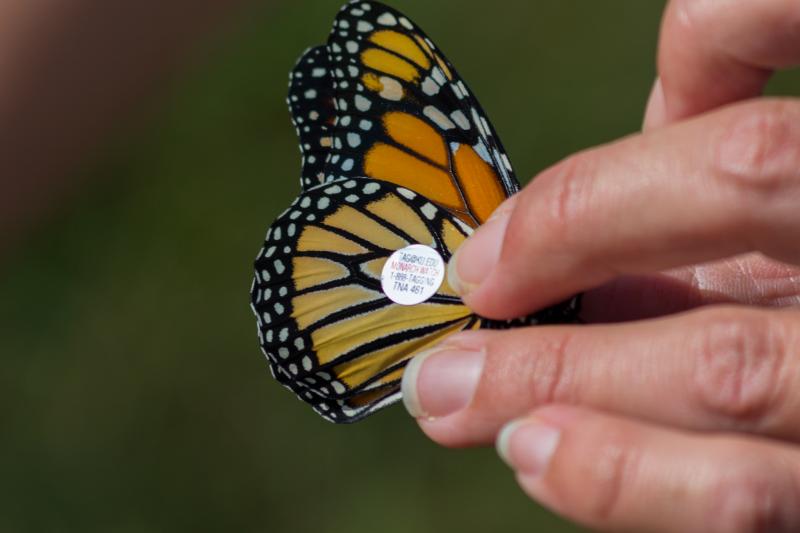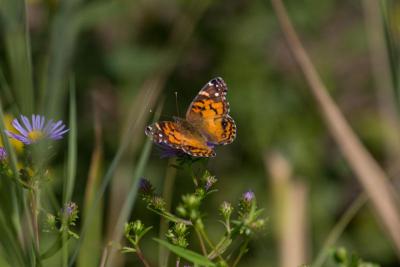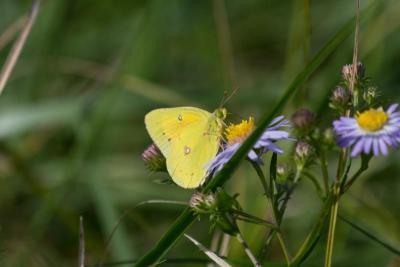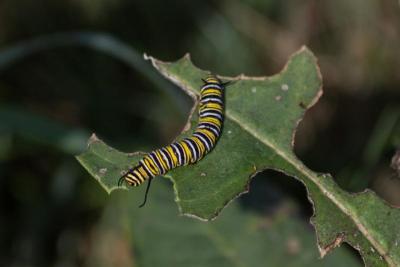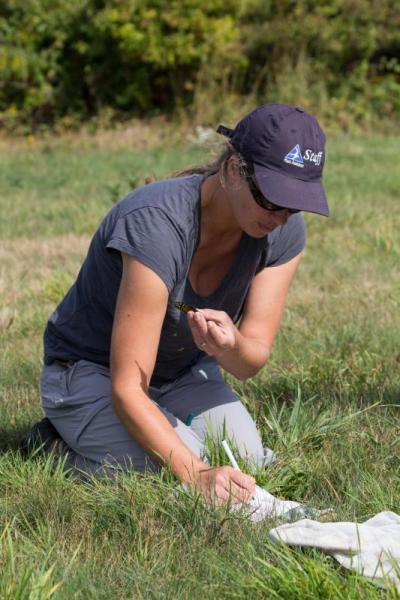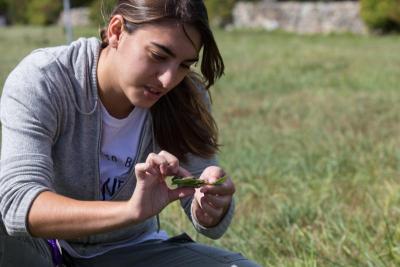Monarch butterfly tagging at Allens Pond Sanctuary
As the weather starts to cool, everything from birds to butterflies are migrating south for the winter. In preparation of the migration of the monarch butterfly, the Allens Pond Wildlife Sanctuary held a monarch tagging event on Saturday.
The event was casual and free to the public. Locals were invited to drop by, pick up a net and go on their way. Property Manager and naturalist Lauren Miller-Donnelly and volunteer Amanda Palmer oversaw the event and were available to provide information about monarchs and the purpose of tagging them.
“The purpose of the monarch tagging is to get a better idea on monarch migration. The North American monarch is the only butterfly that makes this full migration,” Miller-Donnelly said. “And it’s still widely unknown how fast they go, what percentage don’t make it. So this is a long-term citizens’ science project aimed at understanding monarch migration.”
According to the Xerces Society, in North America, monarch numbers have dropped by 90 percent since the 1990s.
The Dartmouth Local Cultural Council provided the sanctuary with a grant that helped them create handouts for participants and purchased additional tags, which are tiny stickers that go on the wings of the butterflies. Despite the fact that each sticker is about the size of the tip of a child’s pinky finger, 500 tags cost about $100.
The event is geared particularly toward kids and families. Kids are shown how to safely catch butterflies with nets. They are then brought to Miller-Donnelly and Palmer who would tag their wings with a sticker, record the information and release the butterflies again.
The sanctuary is hoping that the event will grow in popularity over the years. Miller-Donnelly noted that awareness of monarch butterflies has risen throughout the community, and, subsequently, so has their importance in the public’s consciousness.
Mass Audubon’s motto has always been that anything that’s citizen related is free to the public. Events like this are held year-round with no cost to attendants. Things like owl prowls, woodcock walks, osprey incubation checks, vernal pool nights, and coastal water bird volunteer projects occur seasonally throughout the year.
The weather was extremely windy and so few monarchs took to the skies. However, milkweed plants across the sanctuary were teeming with monarch caterpillars.
Because these caterpillars were born late in the season, when they enter the chrysalis phase of development, the hormones that develop the breeding organs will completely shut down and, instead, a switch of sorts is flipped that helps them orient themselves geographically.
Using their antennas, a combination of the sun’s angle and the magnetic pull of the earth helps them orient themselves and determine where they are and how they’ll get themselves south to Mexico.
If there’s anything Miller-Donnelly wants the public to keep in mind, it’s that monarchs are unique and must be protected.
Citizens can help the monarch population by conserving milkweed. Mail-away caterpillars have been popularized over the years, particularly at elementary schools where students can watch them grow and undergo metamorphosis.
However, those monarchs are often not native to North America and will not achieve a full life cycle, Miller-Donnelly said.
“If you can find local caterpillars and milkweed, you’re actually supporting a native population, you’re teaching kids about conservation, about insects in peril, unique life stages, survival in winter, mating behaviors,” said Miller-Donnelly.
Families looking for more monarch-tagging can register online for Insect Discovery & Monarch Tagging on Sept. 27. Contact allenspond@massaudubon.org for more information.



